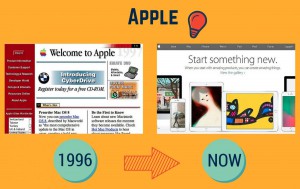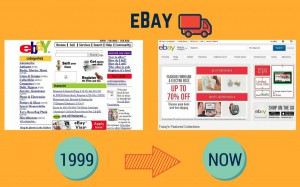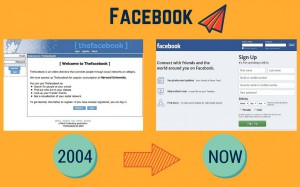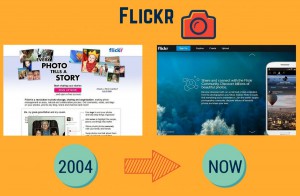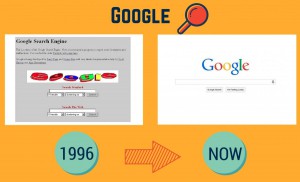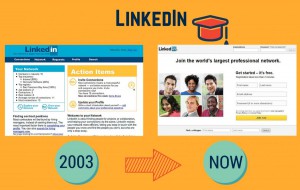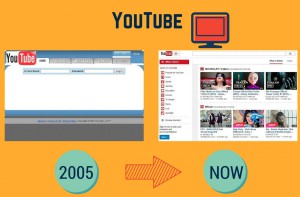What 9 of the World’s Most Popular Websites Looked Like When They Launched
— March 5, 2015Web application development has advanced significantly since the internet’s early days. The evolution is evident when we examine the world’s most popular websites. These sites have transformed from simple and often cluttered designs into polished platforms that define modern user experience. While they may now serve millions or billions of users, their humble beginnings often tell a story of innovation and adaptation. This article explores the origins and development of nine major websites, revealing how they have grown alongside the internet itself.
Apple
Apple’s website in 1996 introduced Mac OS 8 to the world. The design reflected the limitations of the era, with basic graphics and a focus on technical specifications rather than user-friendly navigation.
Despite this, the company’s vision of merging technology with design was apparent. Over the decades, Apple embraced minimalist principles, creating an interface that mirrors the sleek aesthetic of its products. Today, Apple.com is not only a gateway to products but also a representation of the company’s design philosophy, setting a high standard for web development and branding.
eBay
Pierre Omidyar launched eBay in 1995 as a side project, initially calling it “AuctionWeb.” The website was functional but far from visually appealing. The simple layout and limited interactivity were enough for its purpose at the time—connecting buyers and sellers. Fast forward to today, and eBay is valued at over $40 billion. Its platform now features advanced search algorithms, mobile-friendly design, and global reach. eBay’s journey highlights the impact of continuous innovation and the ability to scale an idea from a niche audience to a worldwide phenomenon.
When Mark Zuckerberg introduced “The Facebook” in 2004, its scope was limited to Harvard University students. The original design was barebones, focusing on user profiles and simple interactions. Over the years, Facebook expanded its features, improved its user interface, and opened its platform to a global audience. Today, Facebook connects nearly 3 billion users, offering tools for communication, marketing, and entertainment. Its transformation demonstrates the importance of adaptability and scaling in web application development, especially for software companies aiming to serve diverse audiences.
Flickr
Flickr, launched in 2004, was among the pioneers of online photo sharing. Its original design was straightforward, focusing on functionality rather than aesthetics. Despite this simplicity, it attracted millions of users due to its innovative approach to photo storage and sharing. By 2013, Flickr saw over 3.5 million photos uploaded daily. The platform’s growth underscores how even basic designs can succeed when paired with innovative concepts and a focus on user needs. For developers in software outsourcing or mobile app development, Flickr’s story serves as a lesson in prioritizing user experience over initial design polish.
Google’s early interface in 1996 featured a grey background and a simple search bar. Despite its lack of visual appeal, the functionality was groundbreaking, quickly setting it apart from competitors. Google’s focus on speed and relevance in search results drove its rapid adoption. Today, Google’s homepage is a symbol of minimalist design, offering only a search bar and logo on a white background. This evolution reflects the company’s commitment to efficiency and usability. For web app developers, Google exemplifies how simplicity and core functionality can drive success.
LinkedIn began as a niche platform for professional networking when it launched in 2003. Its original layout was basic, offering limited features for creating connections and sharing resumes. Over time, LinkedIn expanded its scope, adding tools for job searching, content sharing, and professional development. Now available in over 20 languages, LinkedIn connects millions of users worldwide. Its evolution demonstrates how incremental improvements and feature expansions can transform a platform into an essential tool for professionals. Software development companies, especially in outsourcing, can draw inspiration from LinkedIn’s adaptability and global reach.
Yahoo
Yahoo started as a simple list of URLs curated by its founders in the mid-1990s. Initially, the platform relied on Google’s search technology before developing its own. Yahoo’s interface evolved over the years, introducing features like news aggregation, email services, and multimedia content. In 2013, it briefly surpassed Google in US web traffic, although it eventually lost its lead. Yahoo’s story highlights the challenges of staying competitive in a rapidly evolving digital landscape. For web developers, it serves as a reminder of the importance of innovation and adapting to user demands.
YouTube
Founded in 2005 by three former PayPal employees, YouTube began as a simple platform for sharing videos. Its design prioritized functionality, with a straightforward layout and minimal branding. The site’s growth was exponential, leading to its acquisition by Google in 2006 for over $1 billion. Today, YouTube is the world’s largest video-sharing platform, hosting billions of videos across countless genres. Its journey highlights the importance of scalability and user engagement in web development. For software outsourcing companies, YouTube demonstrates the value of creating platforms that can handle rapid growth and diverse user needs.
Conclusion
The transformation of these websites reflects the broader evolution of web application development. From basic designs to sophisticated platforms, these stories highlight the importance of innovation, user focus, and scalability. For software development companies, including those in Vietnam like S3Corp, these examples offer valuable insights into building solutions that not only meet current demands but also adapt to future challenges. Whether you are working on a mobile app, web app, or custom software, understanding these transformations can guide your approach to creating impactful and enduring products.


